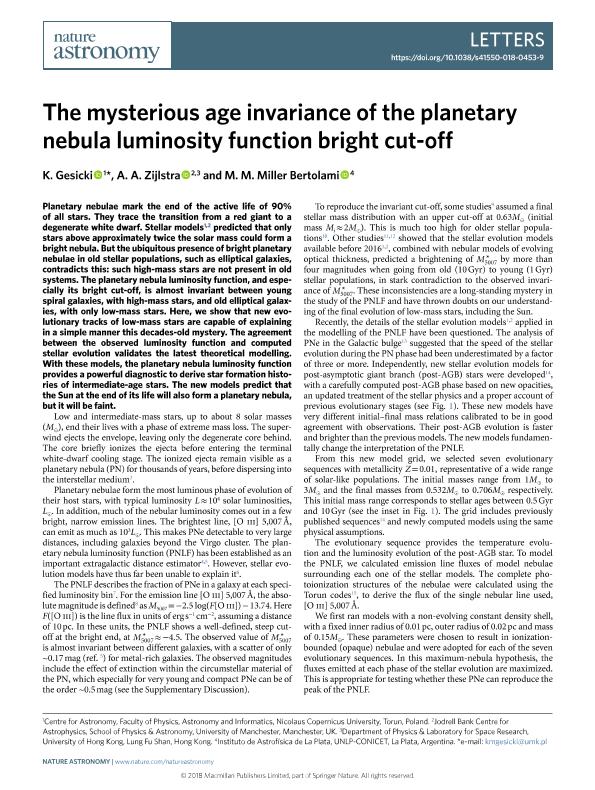Artículo
The mysterious age invariance of the planetary nebula luminosity function bright cut-off
Fecha de publicación:
06/2018
Editorial:
Springer Nature
Revista:
Nature Astronomy
ISSN:
2397-3366
Idioma:
Inglés
Tipo de recurso:
Artículo publicado
Clasificación temática:
Resumen
Planetary nebulae mark the end of the active life of 90% of all stars. They trace the transition from a red giant to a degenerate white dwarf. Stellar models predicted that only stars above approximately twice the solar mass could form a bright nebula. But the ubiquitous presence of bright planetary nebulae in old stellar populations, such as elliptical galaxies, contradicts this: Such high-mass stars are not present in old systems. The planetary nebula luminosity function, and especially its bright cut-off, is almost invariant between young spiral galaxies, with high-mass stars, and old elliptical galaxies, with only low-mass stars. Here, we show that new evolutionary tracks of low-mass stars are capable of explaining in a simple manner this decades-old mystery. The agreement between the observed luminosity function and computed stellar evolution validates the latest theoretical modelling. With these models, the planetary nebula luminosity function provides a powerful diagnostic to derive star formation histories of intermediate-age stars. The new models predict that the Sun at the end of its life will also form a planetary nebula, but it will be faint.
Palabras clave:
Interstellar Medium
,
Stellar Evolution
Archivos asociados
Licencia
Identificadores
Colecciones
Articulos(IALP)
Articulos de INST.DE ASTROFISICA LA PLATA
Articulos de INST.DE ASTROFISICA LA PLATA
Citación
Gesicki, K.; Zijlstra, A.A.; Miller Bertolami, Marcelo Miguel; The mysterious age invariance of the planetary nebula luminosity function bright cut-off; Springer Nature; Nature Astronomy; 2; 7; 6-2018; 580-584
Compartir
Altmétricas




